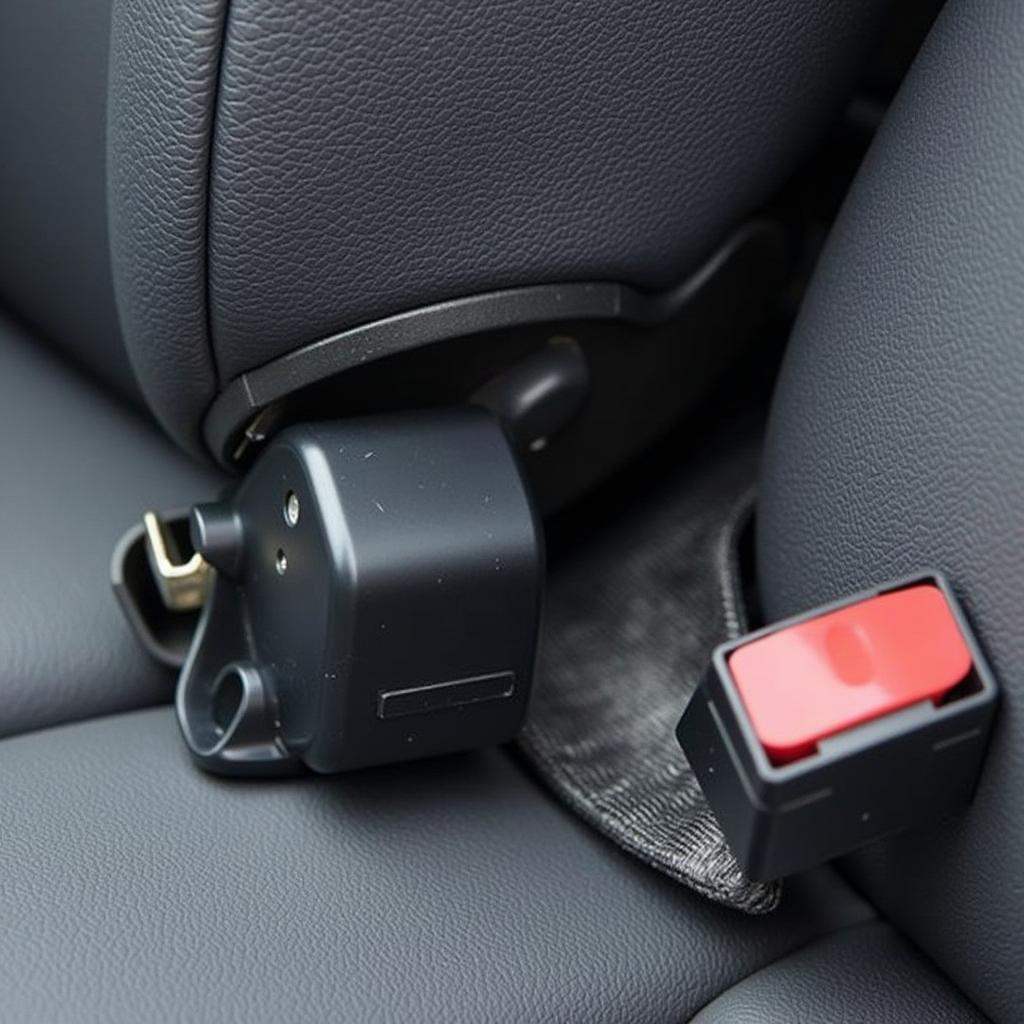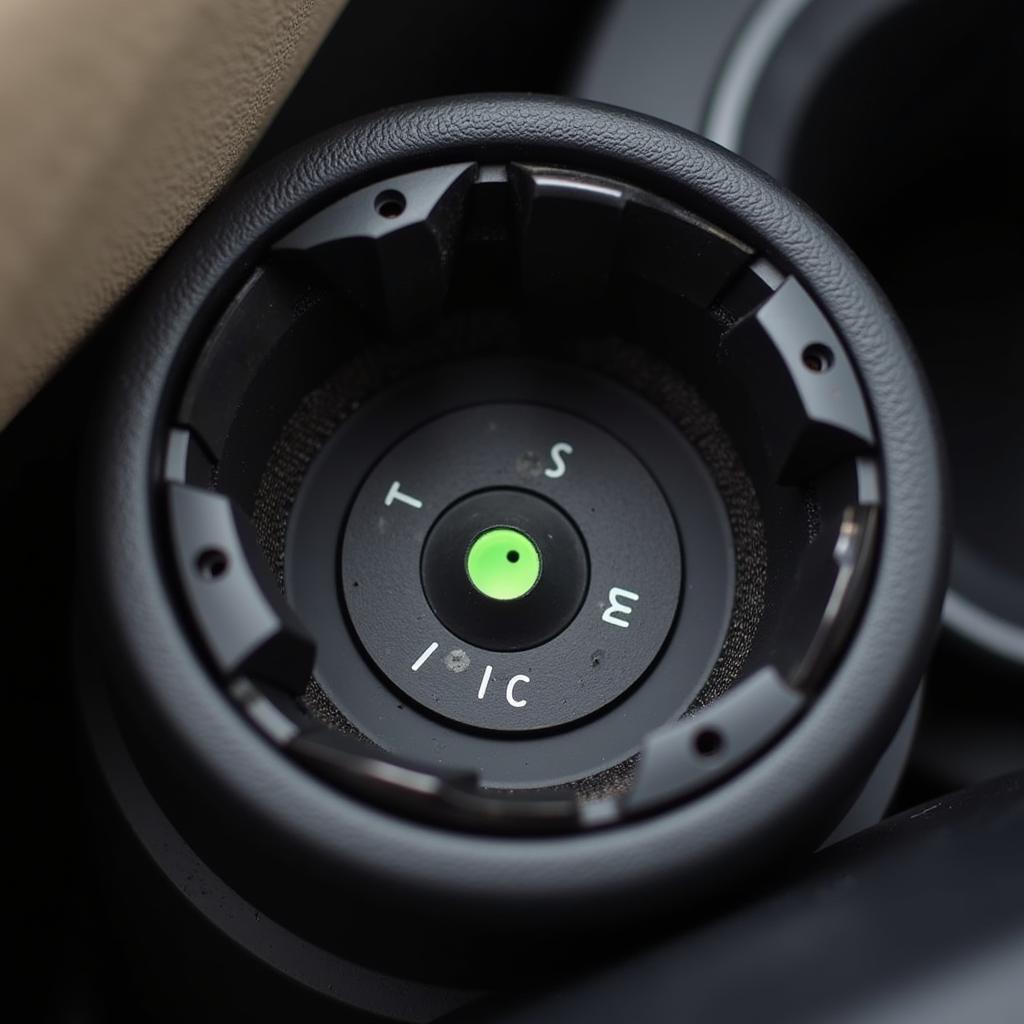The seat belt warning light on your 1995 Honda Civic is a crucial safety feature designed to remind you and your passengers to buckle up. When functioning correctly, the light should illuminate when the ignition is turned on and then turn off once the driver’s seat belt is fastened. However, if you’re experiencing issues with your seat belt warning light staying on, flashing intermittently, or not illuminating at all, this guide will provide a comprehensive troubleshooting approach to help you diagnose and potentially resolve the issue.
Common Causes of Seat Belt Warning Light Issues on a 95 Honda Civic
Before diving into the troubleshooting steps, it’s helpful to understand the common culprits behind a malfunctioning seat belt warning light:
- Faulty Seat Belt Buckle/Sensor: The buckle itself contains a sensor that detects whether the seat belt is fastened. Over time, this sensor can wear out or become damaged, leading to inaccurate readings.
- Wiring Problems: Loose connections, corrosion, or damaged wiring within the seat belt system can disrupt the signal between the buckle sensor and the warning light.
- Seat Belt Pretensioner Issues: In some cases, a problem with the seat belt pretensioner system (which tightens the belt during a collision) can trigger the warning light.
- Faulty Instrument Cluster: While less common, a problem with the instrument cluster itself could be the source of the issue, affecting the functionality of various warning lights.
 Close-up of a seat belt buckle sensor
Close-up of a seat belt buckle sensor
Troubleshooting Steps for a Seat Belt Warning Light on a 95 Honda Civic
Follow these steps to diagnose and address the seat belt warning light issue in your 1995 Honda Civic:
- Check the Seat Belt Engagement: This may seem obvious, but ensure the seat belt is fully fastened and latched into the buckle. Sometimes a simple readjustment can resolve the issue.
- Inspect the Seat Belt Buckle: Carefully examine the buckle for any visible damage, debris, or foreign objects that might be obstructing the latching mechanism or interfering with the sensor. If the buckle appears damaged, it’s best to replace it.
- Check the Wiring Connections: With the ignition off, locate the wiring harness connected to the seat belt buckle under the seat. Inspect the connector and wiring for any loose connections, corrosion, or damage. Reconnect any loose connections and clean any corroded areas with electrical contact cleaner. If the wiring appears damaged, consult a qualified mechanic for repair or replacement.
 Inspecting the seat belt wiring harness under the car seat.
Inspecting the seat belt wiring harness under the car seat. - Test the Seat Belt Warning Light Circuit: Using a multimeter, you can test the continuity of the seat belt warning light circuit. This involves checking for proper voltage and ground signals at the buckle connector. Consult a repair manual or a qualified mechanic if you’re not comfortable performing this test.
- Inspect the Seat Belt Pretensioner: While it’s best to leave pretensioner-related repairs to professionals, you can visually inspect the pretensioner (usually located on the seat belt retractor) for any obvious signs of damage or deployment. If the pretensioner has been deployed, it will need to be replaced along with the seat belt assembly.
- Consider the Instrument Cluster: If all other components check out, there might be a fault within the instrument cluster itself. This is a more complex issue that typically requires professional diagnosis and repair.
“Remember, safety is paramount,” says Johnathan Miller, a veteran automotive electrician. “If you’re uncomfortable with any of these steps or suspect a more serious problem, it’s always best to err on the side of caution and seek assistance from a qualified mechanic.”
When to Consult a Professional
While some seat belt warning light issues can be resolved with basic troubleshooting, certain situations warrant the expertise of a qualified mechanic:
- You suspect pretensioner problems.
- You’re uncomfortable working with electrical components.
- You’ve performed the troubleshooting steps but the issue persists.
“Addressing seat belt warning light problems promptly is essential for your safety,” adds Miller. “Don’t ignore this crucial warning system. Get it checked out to ensure your vehicle is safe to drive.”
Conclusion
A malfunctioning seat belt warning light in your 1995 Honda Civic shouldn’t be ignored. By following these troubleshooting steps, you can potentially identify the root cause of the problem and determine the appropriate course of action. Remember, a properly functioning seat belt system is paramount for your safety and the safety of your passengers. If in doubt, consult a professional mechanic for diagnosis and repair.

